(All information courtesy of the instrument teams.)
![]() Previous IAU Circulars
Previous IAU Circulars
TITLE: GCN/SWIFT NOTICE
NOTICE_DATE: Tue 27 Oct 15 03:58:42 UT
NOTICE_TYPE: Swift-BAT GRB Position
TRIGGER_NUM: 661775, Seg_Num: 0
GRB_RA: 272.491d {+18h 09m 58s} (J2000),
272.533d {+18h 10m 08s} (current),
272.361d {+18h 09m 27s} (1950)
GRB_DEC: +61.381d {+61d 22' 51"} (J2000),
+61.385d {+61d 23' 05"} (current),
+61.369d {+61d 22' 08"} (1950)
GRB_ERROR: 3.00 [arcmin radius, statistical only]
GRB_INTEN: 2699 [cnts] Image_Peak=136 [image_cnts]
TRIGGER_DUR: 0.512 [sec]
TRIGGER_INDEX: 127 E_range: 50-350 keV
BKG_INTEN: 23807 [cnts]
BKG_TIME: 14288.67 SOD {03:58:08.67} UT
BKG_DUR: 8 [sec]
GRB_DATE: 17322 TJD; 300 DOY; 15/10/27
GRB_TIME: 14304.15 SOD {03:58:24.15} UT
GRB_PHI: 1.16 [deg]
GRB_THETA: 51.77 [deg]
SOLN_STATUS: 0x20000003
RATE_SIGNIF: 29.15 [sigma]
IMAGE_SIGNIF: 9.26 [sigma]
MERIT_PARAMS: +1 +0 +0 -1 +3 +0 +0 +0 -3 +0
SUN_POSTN: 211.18d {+14h 04m 44s} -12.65d {-12d 39' 03"}
SUN_DIST: 88.18 [deg] Sun_angle= -4.1 [hr] (East of Sun)
MOON_POSTN: 27.44d {+01h 49m 46s} +8.67d {+08d 39' 55"}
MOON_DIST: 93.85 [deg]
MOON_ILLUM: 100 [%]
GAL_COORDS: 90.51, 28.49 [deg] galactic lon,lat of the burst (or transient)
ECL_COORDS: 283.05, 84.71 [deg] ecliptic lon,lat of the burst (or transient)
COMMENTS: SWIFT-BAT GRB Coordinates.
COMMENTS: This is a rate trigger.
COMMENTS: A point_source was found.
COMMENTS: This does not match any source in the on-board catalog.
COMMENTS: This does not match any source in the ground catalog.
COMMENTS: This is a GRB.
COMMENTS: This trigger occurred at longitude,latitude = 136.64,-16.52 [deg].
COMMENTS:
COMMENTS: NOTE: This BAT event is temporally(0.0<100sec) coincident with the FERMI_GBM event (trignum=467611108).
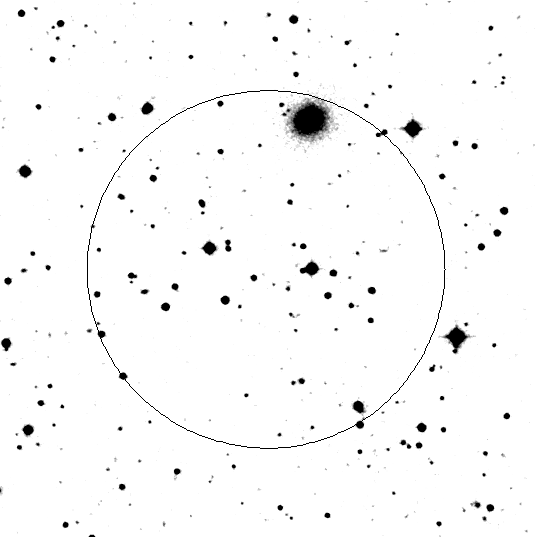
TITLE: GCN/INTEGRAL NOTICE
NOTICE_DATE: Tue 27 Oct 15 03:59:31 UT
NOTICE_TYPE: INTEGRAL SPI ACS Trigger
TRIGGER_NUM: 7283, Sub_Num: 0
GRB_INTEN: 9.83 [sigma]
GRB_TIME: 14302.13 SOD {03:58:22.13} UT
GRB_DATE: 17322 TJD; 300 DOY; 15/10/27
COMMENTS: INTEGRAL SPI_ACS GRB Trigger.
COMMENTS: Time_Scale=2.0000 and Time_Error=1.0000.
COMMENTS:
COMMENTS: NOTE: This SPIACS event is temporally(2.0<100sec) coincident
+with the FERMI_GBM event (trignum=467611108).
COMMENTS:
COMMENTS: The SPIACS lightcurve can be found at:
COMMENTS: ftp://isdcarc.unige.ch/arc/FTP/ibas/spiacs/2015-10/2015-10-27T03-58-21.9621-29609-56208-0.lc
TITLE: GCN/FERMI NOTICE
NOTICE_DATE: Tue 27 Oct 15 03:59:20 UT
NOTICE_TYPE: Fermi-GBM Ground Position
RECORD_NUM: 56
TRIGGER_NUM: 467611108
GRB_RA: 271.620d {+18h 06m 29s} (J2000),
271.657d {+18h 06m 38s} (current),
271.503d {+18h 06m 01s} (1950)
GRB_DEC: +62.010d {+62d 00' 36"} (J2000),
+62.013d {+62d 00' 45"} (current),
+62.002d {+62d 00' 09"} (1950)
GRB_ERROR: 1.14 [deg radius, statistical only]
DATA_SIGNIF: 39.10 [sigma]
DATA_INTERVAL: 2.048 [sec]
GRB_DATE: 17322 TJD; 300 DOY; 15/10/27
GRB_TIME: 14304.03 SOD {03:58:24.03} UT
GRB_PHI: 334.00 [deg]
GRB_THETA: 9.00 [deg]
E_RANGE: 44.032 - 279.965 [keV]
LOC_ALGORITHM: 4153 (Gnd S/W Version number)
SUN_POSTN: 211.18d {+14h 04m 44s} -12.65d {-12d 39' 04"}
SUN_DIST: 88.15 [deg] Sun_angle= -4.0 [hr] (East of Sun)
MOON_POSTN: 27.45d {+01h 49m 48s} +8.67d {+08d 40' 01"}
MOON_DIST: 93.94 [deg]
MOON_ILLUM: 100 [%]
GAL_COORDS: 91.19, 28.95 [deg] galactic lon,lat of the burst (or transient)
ECL_COORDS: 279.51, 85.40 [deg] ecliptic lon,lat of the burst (or transient)
LC_URL: http://heasarc.gsfc.nasa.gov/FTP/fermi/data/gbm/triggers/2015/bn151027166/quicklook/glg_lc_medres34_bn151027166.gif
COMMENTS: Fermi-GBM Ground-calculated Coordinates.
COMMENTS: In the LAT Field-of-view.
COMMENTS: This Notice was ground-generated -- not flight-generated.
COMMENTS: The LC_URL file will not be created/available until ~15 min after the trigger.
COMMENTS:
COMMENTS: NOTE: This GBM event is temporally(0.0<100sec) coincident with the SWIFT_BAT event (trignum=661775).
TITLE: GCN/FERMI NOTICE
NOTICE_DATE: Tue 27 Oct 15 03:58:50 UT
NOTICE_TYPE: Fermi-GBM Flight Position
RECORD_NUM: 45
TRIGGER_NUM: 467611108
GRB_RA: 281.017d {+18h 44m 04s} (J2000),
281.070d {+18h 44m 17s} (current),
280.849d {+18h 43m 24s} (1950)
GRB_DEC: +59.967d {+59d 58' 00"} (J2000),
+59.984d {+59d 59' 01"} (current),
+59.914d {+59d 54' 50"} (1950)
GRB_ERROR: 4.73 [deg radius, statistical plus systematic]
GRB_INTEN: 662 [cnts/sec]
DATA_SIGNIF: 29.20 [sigma]
INTEG_TIME: 1.024 [sec]
GRB_DATE: 17322 TJD; 300 DOY; 15/10/27
GRB_TIME: 14304.03 SOD {03:58:24.03} UT
GRB_PHI: 0.00 [deg]
GRB_THETA: 5.00 [deg]
DATA_TIME_SCALE: 1.0240 [sec]
HARD_RATIO: 0.90
LOC_ALGORITHM: 3 (version number of)
MOST_LIKELY: 95% GRB
2nd_MOST_LIKELY: 2% Cyg X-1
DETECTORS: 1,0,0, 1,0,0, 0,0,0, 0,0,0, 0,0,
SUN_POSTN: 211.18d {+14h 04m 44s} -12.65d {-12d 39' 03"}
SUN_DIST: 91.25 [deg] Sun_angle= -4.7 [hr] (East of Sun)
MOON_POSTN: 27.44d {+01h 49m 47s} +8.67d {+08d 39' 56"}
MOON_DIST: 90.51 [deg]
MOON_ILLUM: 100 [%]
GAL_COORDS: 89.69, 24.15 [deg] galactic lon,lat of the burst (or transient)
ECL_COORDS: 311.96, 81.78 [deg] ecliptic lon,lat of the burst (or transient)
LC_URL: http://heasarc.gsfc.nasa.gov/FTP/fermi/data/gbm/triggers/2015/bn151027166/quicklook/glg_lc_medres34_bn151027166.gif
COMMENTS: Fermi-GBM Flight-calculated Coordinates.
COMMENTS: This trigger occurred at longitude,latitude = 163.07,17.28 [deg].
COMMENTS: The LC_URL file will not be created until ~15 min after the trigger.
COMMENTS:
COMMENTS: NOTE: This GBM event is temporally(0.0<100sec) coincident with the SWIFT_BAT event (trignum=661775).
TITLE: GCN/SWIFT NOTICE
NOTICE_DATE: Tue 27 Oct 15 04:00:26 UT
NOTICE_TYPE: Swift-XRT Position
TRIGGER_NUM: 661775, Seg_Num: 0
GRB_RA: 272.4886d {+18h 09m 57.26s} (J2000),
272.5302d {+18h 10m 07.25s} (current),
272.3571d {+18h 09m 25.70s} (1950)
GRB_DEC: +61.3515d {+61d 21' 05.4"} (J2000),
+61.3554d {+61d 21' 19.2"} (current),
+61.3397d {+61d 20' 23.0"} (1950)
GRB_ERROR: 4.8 [arcsec radius, statistical plus systematic, 90% containment]
GRB_INTEN: 7.08e-09 [erg/cm2/sec]
GRB_SIGNIF: 13.34 [sigma]
IMG_START_DATE: 17322 TJD; 300 DOY; 15/10/27
IMG_START_TIME: 14391.15 SOD {03:59:51.15} UT, 87.0 [sec] since BAT Trigger Time
TAM[0-3]: 327.66 237.21 261.60 243.37
AMPLIFIER: 2
WAVEFORM: 134
SUN_POSTN: 211.19d {+14h 04m 44s} -12.65d {-12d 39' 05"}
SUN_DIST: 88.16 [deg] Sun_angle= -4.1 [hr] (East of Sun)
MOON_POSTN: 27.46d {+01h 49m 51s} +8.67d {+08d 40' 13"}
MOON_DIST: 93.87 [deg]
MOON_ILLUM: 100 [%]
GAL_COORDS: 90.48, 28.49 [deg] galactic lon,lat of the burst
ECL_COORDS: 282.97, 84.68 [deg] ecliptic lon,lat of the burst
COMMENTS: SWIFT-XRT Coordinates.
COMMENTS: The XRT position is 1.76 arcmin from the BAT position.
COMMENTS: The object found at this position is either a very bright burst or a cosmic ray hit.
COMMENTS: Examine the XRT Image to differentiate (CRs are much more compact); see examples at:
COMMENTS: http://www.swift.psu.edu/xrt/XRT_Postage_Stamp_Image_Photo_Gallery.htm .
TITLE: GCN/SWIFT NOTICE
NOTICE_DATE: Tue 27 Oct 15 04:00:42 UT
NOTICE_TYPE: Swift-XRT Image
TRIGGER_NUM: 661775, Seg_Num: 0
GRB_RA: 272.4886d {+18h 09m 57.2s} (J2000),
272.5302d {+18h 10m 07.2s} (current),
272.3571d {+18h 09m 25.7s} (1950)
GRB_DEC: +61.3515d {+61d 21' 05.4"} (J2000),
+61.3554d {+61d 21' 19.2"} (current),
+61.3397d {+61d 20' 23.0"} (1950)
GRB_ERROR: 4.7 [arcsec, radius, statistical plus systematic]
GRB_INTEN: 178 [cnts]
IMG_START_DATE: 17322 TJD; 300 DOY; 15/10/27
IMG_START_TIME: 14391.15 SOD {03:59:51.15} UT, 87.0 [sec] since BAT Trigger Time
CENTROID_X: 316.34, raw= 316 [pixels]
CENTROID_Y: 344.28, raw= 344 [pixels]
ROLL: 238.91 [deg]
GAIN: 4
MODE: 3, Long Image mode
WAVEFORM: 134
EXPO_TIME: 2.50 [sec]
GRB_POS_XRT_Y: 109.57
GRB_POS_XRT_Z: 26.03
IMAGE_URL: sw00661775000msxps_rw.img
SUN_POSTN: 211.19d {+14h 04m 44s} -12.65d {-12d 39' 05"}
SUN_DIST: 88.16 [deg] Sun_angle= -4.1 [hr] (East of Sun)
MOON_POSTN: 27.46d {+01h 49m 51s} +8.67d {+08d 40' 16"}
MOON_DIST: 93.87 [deg]
MOON_ILLUM: 100 [%]
GAL_COORDS: 90.48, 28.49 [deg] galactic lon,lat of the burst
ECL_COORDS: 282.97, 84.68 [deg] ecliptic lon,lat of the burst
COMMENTS: SWIFT-XRT Image.
COMMENTS: The object found at this position is either a very bright burst or a cosmic ray hit.
COMMENTS: Examine the XRT Image to differentiate (CRs are much more compact); see examples at:
COMMENTS: http://www.swift.psu.edu/xrt/XRT_Postage_Stamp_Image_Photo_Gallery.htm .

TITLE: GCN/SWIFT NOTICE
NOTICE_DATE: Tue 27 Oct 15 04:00:48 UT
NOTICE_TYPE: Swift-XRT Processed Image
TRIGGER_NUM: 661775, Seg_Num: 0
GRB_RA: 272.4886d {+18h 09m 57.2s} (J2000),
272.5302d {+18h 10m 07.2s} (current),
272.3571d {+18h 09m 25.7s} (1950)
GRB_DEC: +61.3515d {+61d 21' 05.4"} (J2000),
+61.3554d {+61d 21' 19.2"} (current),
+61.3397d {+61d 20' 23.0"} (1950)
GRB_ERROR: 4.7 [arcsec, radius, statistical plus systematic]
GRB_INTEN: 178 [cnts]
IMG_START_DATE: 17322 TJD; 300 DOY; 15/10/27
IMG_START_TIME: 14391.15 SOD {03:59:51.15} UT, 87.0 [sec] since BAT Trigger Time
CENTROID_X: 316.34, raw= 316 [pixels]
CENTROID_Y: 344.28, raw= 344 [pixels]
ROLL: 238.91 [deg]
GAIN: 4
MODE: 3, Long Image mode
WAVEFORM: 134
EXPO_TIME: 2.50 [sec]
GRB_POS_XRT_Y: 109.57
GRB_POS_XRT_Z: 26.03
IMAGE_URL: sw00661775000msxps_rw.img
SUN_POSTN: 211.19d {+14h 04m 45s} -12.65d {-12d 39' 05"}
SUN_DIST: 88.16 [deg] Sun_angle= -4.1 [hr] (East of Sun)
MOON_POSTN: 27.46d {+01h 49m 51s} +8.67d {+08d 40' 17"}
MOON_DIST: 93.87 [deg]
MOON_ILLUM: 100 [%]
GAL_COORDS: 90.48, 28.49 [deg] galactic lon,lat of the burst
ECL_COORDS: 282.97, 84.68 [deg] ecliptic lon,lat of the burst
COMMENTS: SWIFT-XRT Processed Image.
COMMENTS: The object found at this position is either a very bright burst or a cosmic ray hit.
COMMENTS: Examine the XRT Image to differentiate (CRs are much more compact); see examples at:
COMMENTS: http://www.swift.psu.edu/xrt/XRT_Postage_Stamp_Image_Photo_Gallery.htm .

TITLE: GCN/SWIFT NOTICE
NOTICE_DATE: Tue 27 Oct 15 04:02:03 UT
NOTICE_TYPE: Swift-BAT GRB Lightcurve
TRIGGER_NUM: 661775, Seg_Num: 0
GRB_RA: 272.491d {+18h 09m 58s} (J2000),
272.533d {+18h 10m 08s} (current),
272.361d {+18h 09m 27s} (1950)
GRB_DEC: +61.381d {+61d 22' 51"} (J2000),
+61.385d {+61d 23' 05"} (current),
+61.369d {+61d 22' 08"} (1950)
GRB_DATE: 17322 TJD; 300 DOY; 15/10/27
GRB_TIME: 14304.15 SOD {03:58:24.15} UT
TRIGGER_INDEX: 127
GRB_PHI: 1.16 [deg]
GRB_THETA: 51.77 [deg]
DELTA_TIME: 52.00 [sec]
TRIGGER_DUR: 0.512 [sec]
SOLN_STATUS: 0x3
RATE_SIGNIF: 29.15 [sigma]
IMAGE_SIGNIF: 9.26 [sigma]
LC_URL: sw00661775000msb.lc
SUN_POSTN: 211.19d {+14h 04m 45s} -12.65d {-12d 39' 06"}
SUN_DIST: 88.18 [deg] Sun_angle= -4.1 [hr] (East of Sun)
MOON_POSTN: 27.48d {+01h 49m 55s} +8.67d {+08d 40' 30"}
MOON_DIST: 93.86 [deg]
MOON_ILLUM: 100 [%]
GAL_COORDS: 90.51, 28.49 [deg] galactic lon,lat of the burst (or transient)
ECL_COORDS: 283.05, 84.71 [deg] ecliptic lon,lat of the burst (or transient)
COMMENTS: SWIFT-BAT GRB Lightcurve.
COMMENTS:
COMMENTS: The next comments were copied from the BAT_POS Notice:
COMMENTS: This is a rate trigger.
COMMENTS: A point_source was found.
COMMENTS: This does not match any source in the on-board catalog.
COMMENTS: This does not match any source in the ground catalog.
COMMENTS: This is a GRB.
COMMENTS: This trigger occurred at longitude,latitude = 136.64,-16.52 [deg].
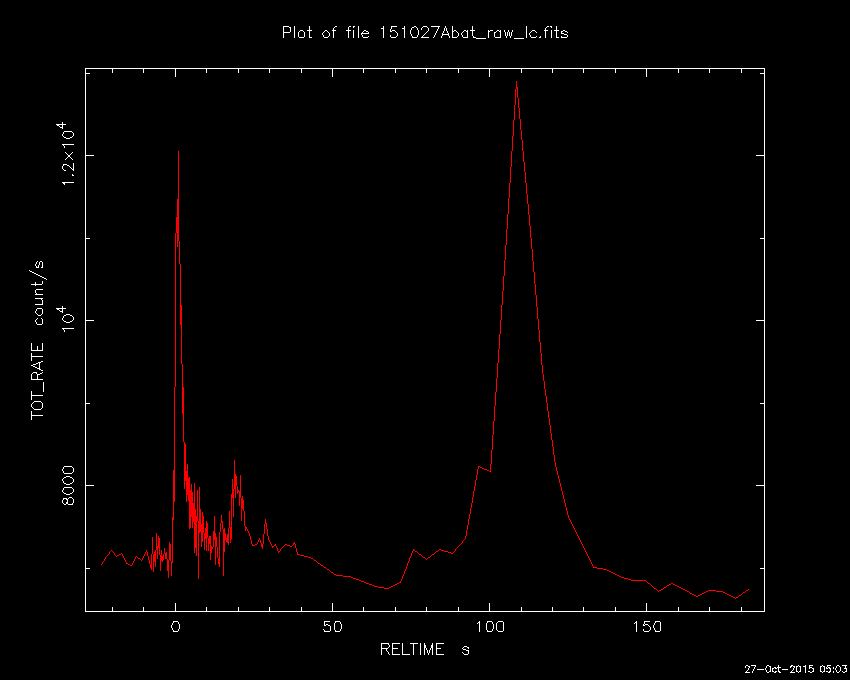
TITLE: GCN/SWIFT NOTICE
NOTICE_DATE: Tue 27 Oct 15 04:05:26 UT
NOTICE_TYPE: Swift-UVOT Source List
TRIGGER_NUM: 661775, Seg_Num: 0
POINT_RA: 272.442d {+18h 09m 46s} (J2000)
POINT_DEC: +61.374d {+61d 22' 28"} (J2000)
POINT_ROLL: 238.907d
IMG_START_DATE: 17322 TJD; 300 DOY; 15/10/27
IMG_START_TIME: 14399.67 SOD {03:59:59.67} UT, 95.5 [sec] since BAT Trigger Time
FILTER: 10, White
BKG_MEAN: 7.523
N_STARS: 41
X_OFFSET: 312 [pixels]
Y_OFFSET: 608 [pixels]
X_MAX: 1271 [pixels]
Y_MAX: 1567 [pixels]
DET_THRESH: 24
PHOTO_THRESH: 15
SL_URL: sw00661775000msufc0095.fits
SUN_POSTN: 211.19d {+14h 04m 45s} -12.65d {-12d 39' 09"}
SUN_DIST: 88.15 [deg] Sun_angle= -4.1 [hr] (East of Sun)
MOON_POSTN: 27.51d {+01h 50m 03s} +8.68d {+08d 41' 06"}
MOON_DIST: 93.89 [deg]
MOON_ILLUM: 100 [%]
GAL_COORDS: 90.51, 28.51 [deg] galactic lon,lat of the pointing direction
ECL_COORDS: 282.78, 84.71 [deg] ecliptic lon,lat of the pointing direction
COMMENTS: SWIFT-UVOT Source List.
TITLE: GCN/SWIFT NOTICE
NOTICE_DATE: Tue 27 Oct 15 04:05:55 UT
NOTICE_TYPE: Swift-UVOT Processed Source List
TRIGGER_NUM: 661775, Seg_Num: 0
POINT_RA: 272.442d {+18h 09m 46s} (J2000)
POINT_DEC: +61.374d {+61d 22' 28"} (J2000)
POINT_ROLL: 238.907d
IMG_START_DATE: 17322 TJD; 300 DOY; 15/10/27
IMG_START_TIME: 14399.67 SOD {03:59:59.67} UT, 95.5 [sec] since BAT Trigger Time
FILTER: 10, White
BKG_MEAN: 7.523
N_STARS: 41
X_OFFSET: 312 [pixels]
Y_OFFSET: 608 [pixels]
X_MAX: 1271 [pixels]
Y_MAX: 1567 [pixels]
DET_THRESH: 24
PHOTO_THRESH: 15
SL_URL: sw00661775000msufc0095.fits
SUN_POSTN: 211.19d {+14h 04m 45s} -12.65d {-12d 39' 09"}
SUN_DIST: 88.15 [deg] Sun_angle= -4.1 [hr] (East of Sun)
MOON_POSTN: 27.52d {+01h 50m 04s} +8.69d {+08d 41' 11"}
MOON_DIST: 93.89 [deg]
MOON_ILLUM: 100 [%]
GAL_COORDS: 90.51, 28.51 [deg] galactic lon,lat of the pointing direction
ECL_COORDS: 282.78, 84.71 [deg] ecliptic lon,lat of the pointing direction
COMMENTS: SWIFT-UVOT Processed Source List.
COMMENTS: All 4 attachments are included.
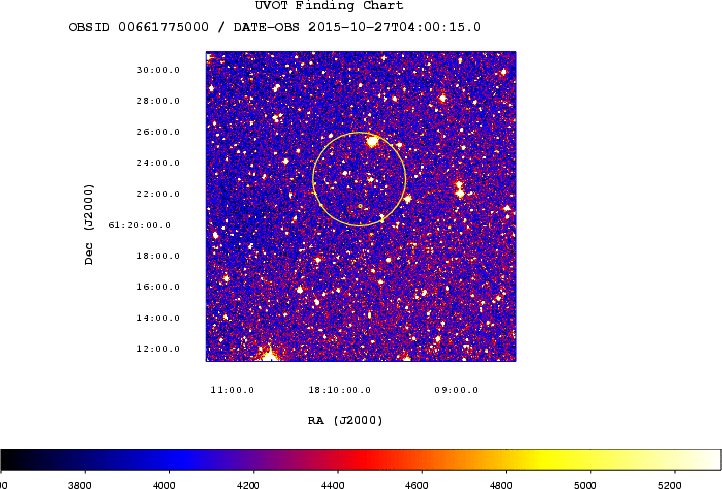
TITLE: GCN/SWIFT NOTICE
NOTICE_DATE: Tue 27 Oct 15 04:07:04 UT
NOTICE_TYPE: Swift-UVOT Image
TRIGGER_NUM: 661775, Seg_Num: 0
POINT_RA: 272.442d {+18h 09m 46s} (J2000)
POINT_DEC: +61.374d {+61d 22' 28"} (J2000)
ROLL: 238.907d
IMG_START_DATE: 17322 TJD; 300 DOY; 15/10/27
IMG_START_TIME: 14399.67 SOD {03:59:59.67} UT, 95.5 [sec] since BAT Trigger Time
FILTER: 10, White
EXPOSURE_ID: 467611215
X_OFFSET: 649 [pixels]
Y_OFFSET: 721 [pixels]
WIDTH: 160 [pixels]
HEIGHT: 160 [pixels]
X_GRB_POS: 809
Y_GRB_POS: 881
BINNING_INDEX: 1
IM_URL: sw00661775000msuni0111.fits
SUN_POSTN: 211.19d {+14h 04m 46s} -12.65d {-12d 39' 10"}
SUN_DIST: 88.15 [deg] Sun_angle= -4.1 [hr] (East of Sun)
MOON_POSTN: 27.53d {+01h 50m 07s} +8.69d {+08d 41' 23"}
MOON_DIST: 93.89 [deg]
MOON_ILLUM: 100 [%]
GAL_COORDS: 90.51, 28.51 [deg] galactic lon,lat of the pointing direction
ECL_COORDS: 282.78, 84.71 [deg] ecliptic lon,lat of the pointing direction
COMMENTS: SWIFT-UVOT Image.
COMMENTS: The GRB Position came from the XRT Position Command.
COMMENTS: The image has 2x2 binning (compression).
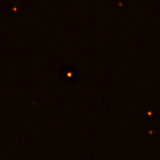
TITLE: GCN/SWIFT NOTICE
NOTICE_DATE: Tue 27 Oct 15 04:07:26 UT
NOTICE_TYPE: Swift-UVOT Processed Image
TRIGGER_NUM: 661775, Seg_Num: 0
POINT_RA: 272.442d {+18h 09m 46s} (J2000)
POINT_DEC: +61.374d {+61d 22' 28"} (J2000)
ROLL: 238.907d
IMG_START_DATE: 17322 TJD; 300 DOY; 15/10/27
IMG_START_TIME: 14399.67 SOD {03:59:59.67} UT, 95.5 [sec] since BAT Trigger Time
FILTER: 10, White
EXPOSURE_ID: 467611215
X_OFFSET: 649 [pixels]
Y_OFFSET: 721 [pixels]
WIDTH: 160 [pixels]
HEIGHT: 160 [pixels]
X_GRB_POS: 809
Y_GRB_POS: 881
BINNING_INDEX: 1
IM_URL: sw00661775000msuni0111.fits
SUN_POSTN: 211.19d {+14h 04m 46s} -12.65d {-12d 39' 11"}
SUN_DIST: 88.15 [deg] Sun_angle= -4.1 [hr] (East of Sun)
MOON_POSTN: 27.53d {+01h 50m 08s} +8.69d {+08d 41' 27"}
MOON_DIST: 93.89 [deg]
MOON_ILLUM: 100 [%]
GAL_COORDS: 90.51, 28.51 [deg] galactic lon,lat of the pointing direction
ECL_COORDS: 282.78, 84.71 [deg] ecliptic lon,lat of the pointing direction
COMMENTS: SWIFT-UVOT Processed Image.
COMMENTS: The GRB Position came from the XRT Position Command.
COMMENTS: The image has 2x2 binning (compression).
COMMENTS: All 4 attachments are included.
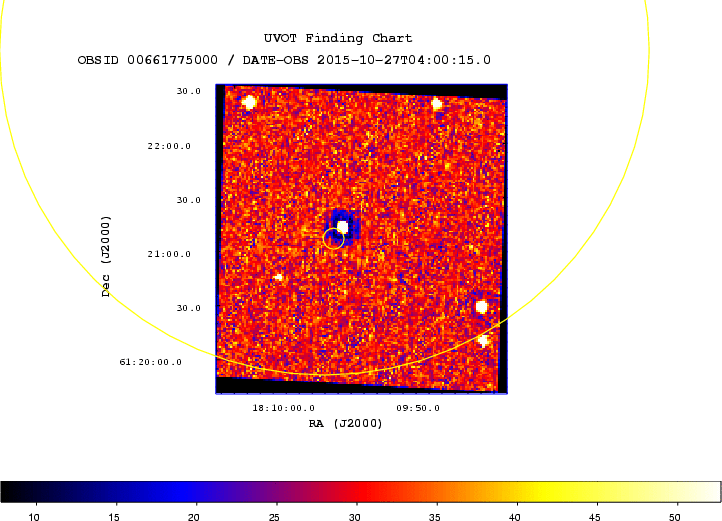
TITLE: GCN/SWIFT NOTICE
NOTICE_DATE: Tue 27 Oct 15 04:12:04 UT
NOTICE_TYPE: Swift-UVOT Source List
TRIGGER_NUM: 661775, Seg_Num: 0
POINT_RA: 272.445d {+18h 09m 47s} (J2000)
POINT_DEC: +61.372d {+61d 22' 19"} (J2000)
POINT_ROLL: 238.910d
IMG_START_DATE: 17322 TJD; 300 DOY; 15/10/27
IMG_START_TIME: 14612.99 SOD {04:03:32.99} UT, 308.8 [sec] since BAT Trigger Time
FILTER: 7, U
BKG_MEAN: 2.780
N_STARS: 31
X_OFFSET: 329 [pixels]
Y_OFFSET: 401 [pixels]
X_MAX: 1288 [pixels]
Y_MAX: 1360 [pixels]
DET_THRESH: 14
PHOTO_THRESH: 7
SL_URL: sw00661775000msufc0308.fits
SUN_POSTN: 211.19d {+14h 04m 46s} -12.65d {-12d 39' 15"}
SUN_DIST: 88.15 [deg] Sun_angle= -4.1 [hr] (East of Sun)
MOON_POSTN: 27.58d {+01h 50m 19s} +8.70d {+08d 42' 16"}
MOON_DIST: 93.90 [deg]
MOON_ILLUM: 100 [%]
GAL_COORDS: 90.50, 28.51 [deg] galactic lon,lat of the pointing direction
ECL_COORDS: 282.79, 84.70 [deg] ecliptic lon,lat of the pointing direction
COMMENTS: SWIFT-UVOT Source List.
TITLE: GCN/SWIFT NOTICE
NOTICE_DATE: Tue 27 Oct 15 04:12:21 UT
NOTICE_TYPE: Swift-UVOT Processed Source List
TRIGGER_NUM: 661775, Seg_Num: 0
POINT_RA: 272.445d {+18h 09m 47s} (J2000)
POINT_DEC: +61.372d {+61d 22' 19"} (J2000)
POINT_ROLL: 238.910d
IMG_START_DATE: 17322 TJD; 300 DOY; 15/10/27
IMG_START_TIME: 14612.99 SOD {04:03:32.99} UT, 308.8 [sec] since BAT Trigger Time
FILTER: 7, U
BKG_MEAN: 2.780
N_STARS: 31
X_OFFSET: 329 [pixels]
Y_OFFSET: 401 [pixels]
X_MAX: 1288 [pixels]
Y_MAX: 1360 [pixels]
DET_THRESH: 14
PHOTO_THRESH: 7
SL_URL: sw00661775000msufc0308.fits
SUN_POSTN: 211.19d {+14h 04m 46s} -12.65d {-12d 39' 15"}
SUN_DIST: 88.15 [deg] Sun_angle= -4.1 [hr] (East of Sun)
MOON_POSTN: 27.58d {+01h 50m 20s} +8.71d {+08d 42' 19"}
MOON_DIST: 93.90 [deg]
MOON_ILLUM: 100 [%]
GAL_COORDS: 90.50, 28.51 [deg] galactic lon,lat of the pointing direction
ECL_COORDS: 282.79, 84.70 [deg] ecliptic lon,lat of the pointing direction
COMMENTS: SWIFT-UVOT Processed Source List.
COMMENTS: All 4 attachments are included.
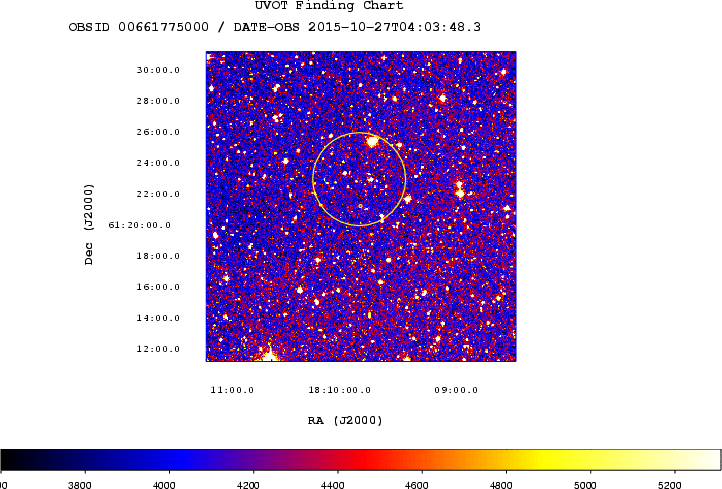
TITLE: GCN/SWIFT NOTICE
NOTICE_DATE: Tue 27 Oct 15 04:13:31 UT
NOTICE_TYPE: Swift-UVOT Image
TRIGGER_NUM: 661775, Seg_Num: 0
POINT_RA: 272.445d {+18h 09m 47s} (J2000)
POINT_DEC: +61.372d {+61d 22' 19"} (J2000)
ROLL: 238.910d
IMG_START_DATE: 17322 TJD; 300 DOY; 15/10/27
IMG_START_TIME: 14612.99 SOD {04:03:32.99} UT, 308.8 [sec] since BAT Trigger Time
FILTER: 7, U
EXPOSURE_ID: 467611428
X_OFFSET: 649 [pixels]
Y_OFFSET: 721 [pixels]
WIDTH: 160 [pixels]
HEIGHT: 160 [pixels]
X_GRB_POS: 809
Y_GRB_POS: 881
BINNING_INDEX: 1
IM_URL: sw00661775000msuni0324.fits
SUN_POSTN: 211.19d {+14h 04m 47s} -12.65d {-12d 39' 16"}
SUN_DIST: 88.15 [deg] Sun_angle= -4.1 [hr] (East of Sun)
MOON_POSTN: 27.59d {+01h 50m 22s} +8.71d {+08d 42' 31"}
MOON_DIST: 93.90 [deg]
MOON_ILLUM: 100 [%]
GAL_COORDS: 90.50, 28.51 [deg] galactic lon,lat of the pointing direction
ECL_COORDS: 282.79, 84.70 [deg] ecliptic lon,lat of the pointing direction
COMMENTS: SWIFT-UVOT Image.
COMMENTS: The GRB Position came from the XRT Position Command.
COMMENTS: The image has 2x2 binning (compression).
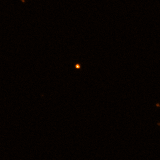
TITLE: GCN/SWIFT NOTICE
NOTICE_DATE: Tue 27 Oct 15 04:13:55 UT
NOTICE_TYPE: Swift-UVOT Processed Image
TRIGGER_NUM: 661775, Seg_Num: 0
POINT_RA: 272.445d {+18h 09m 47s} (J2000)
POINT_DEC: +61.372d {+61d 22' 19"} (J2000)
ROLL: 238.910d
IMG_START_DATE: 17322 TJD; 300 DOY; 15/10/27
IMG_START_TIME: 14612.99 SOD {04:03:32.99} UT, 308.8 [sec] since BAT Trigger Time
FILTER: 7, U
EXPOSURE_ID: 467611428
X_OFFSET: 649 [pixels]
Y_OFFSET: 721 [pixels]
WIDTH: 160 [pixels]
HEIGHT: 160 [pixels]
X_GRB_POS: 809
Y_GRB_POS: 881
BINNING_INDEX: 1
IM_URL: sw00661775000msuni0324.fits
SUN_POSTN: 211.19d {+14h 04m 47s} -12.65d {-12d 39' 16"}
SUN_DIST: 88.15 [deg] Sun_angle= -4.1 [hr] (East of Sun)
MOON_POSTN: 27.60d {+01h 50m 23s} +8.71d {+08d 42' 35"}
MOON_DIST: 93.90 [deg]
MOON_ILLUM: 100 [%]
GAL_COORDS: 90.50, 28.51 [deg] galactic lon,lat of the pointing direction
ECL_COORDS: 282.79, 84.70 [deg] ecliptic lon,lat of the pointing direction
COMMENTS: SWIFT-UVOT Processed Image.
COMMENTS: The GRB Position came from the XRT Position Command.
COMMENTS: The image has 2x2 binning (compression).
COMMENTS: All 4 attachments are included.
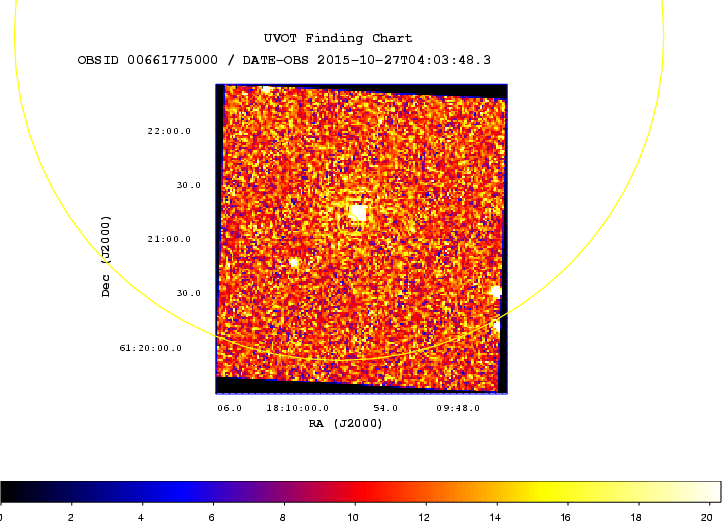
TITLE: GCN/SWIFT NOTICE
NOTICE_DATE: Tue 27 Oct 15 04:15:38 UT
NOTICE_TYPE: Swift-UVOT Source List
TRIGGER_NUM: 661775, Seg_Num: 0
POINT_RA: 272.445d {+18h 09m 47s} (J2000)
POINT_DEC: +61.372d {+61d 22' 19"} (J2000)
POINT_ROLL: 238.910d
IMG_START_DATE: 17322 TJD; 300 DOY; 15/10/27
IMG_START_TIME: 15162.83 SOD {04:12:42.83} UT, 858.7 [sec] since BAT Trigger Time
FILTER: 10, White
BKG_MEAN: 3.233
N_STARS: 155
X_OFFSET: 89 [pixels]
Y_OFFSET: 161 [pixels]
X_MAX: 1528 [pixels]
Y_MAX: 1600 [pixels]
DET_THRESH: 15
PHOTO_THRESH: 8
SL_URL: sw00661775000msufc0858.fits
SUN_POSTN: 211.20d {+14h 04m 47s} -12.66d {-12d 39' 18"}
SUN_DIST: 88.15 [deg] Sun_angle= -4.1 [hr] (East of Sun)
MOON_POSTN: 27.62d {+01h 50m 28s} +8.71d {+08d 42' 53"}
MOON_DIST: 93.90 [deg]
MOON_ILLUM: 100 [%]
GAL_COORDS: 90.50, 28.51 [deg] galactic lon,lat of the pointing direction
ECL_COORDS: 282.79, 84.70 [deg] ecliptic lon,lat of the pointing direction
COMMENTS: SWIFT-UVOT Source List.
TITLE: GCN/SWIFT NOTICE
NOTICE_DATE: Tue 27 Oct 15 04:15:58 UT
NOTICE_TYPE: Swift-UVOT Processed Source List
TRIGGER_NUM: 661775, Seg_Num: 0
POINT_RA: 272.445d {+18h 09m 47s} (J2000)
POINT_DEC: +61.372d {+61d 22' 19"} (J2000)
POINT_ROLL: 238.910d
IMG_START_DATE: 17322 TJD; 300 DOY; 15/10/27
IMG_START_TIME: 15162.83 SOD {04:12:42.83} UT, 858.7 [sec] since BAT Trigger Time
FILTER: 10, White
BKG_MEAN: 3.233
N_STARS: 155
X_OFFSET: 89 [pixels]
Y_OFFSET: 161 [pixels]
X_MAX: 1528 [pixels]
Y_MAX: 1600 [pixels]
DET_THRESH: 15
PHOTO_THRESH: 8
SL_URL: sw00661775000msufc0858.fits
SUN_POSTN: 211.20d {+14h 04m 47s} -12.66d {-12d 39' 18"}
SUN_DIST: 88.15 [deg] Sun_angle= -4.1 [hr] (East of Sun)
MOON_POSTN: 27.62d {+01h 50m 28s} +8.72d {+08d 42' 57"}
MOON_DIST: 93.90 [deg]
MOON_ILLUM: 100 [%]
GAL_COORDS: 90.50, 28.51 [deg] galactic lon,lat of the pointing direction
ECL_COORDS: 282.79, 84.70 [deg] ecliptic lon,lat of the pointing direction
COMMENTS: SWIFT-UVOT Processed Source List.
COMMENTS: All 4 attachments are included.
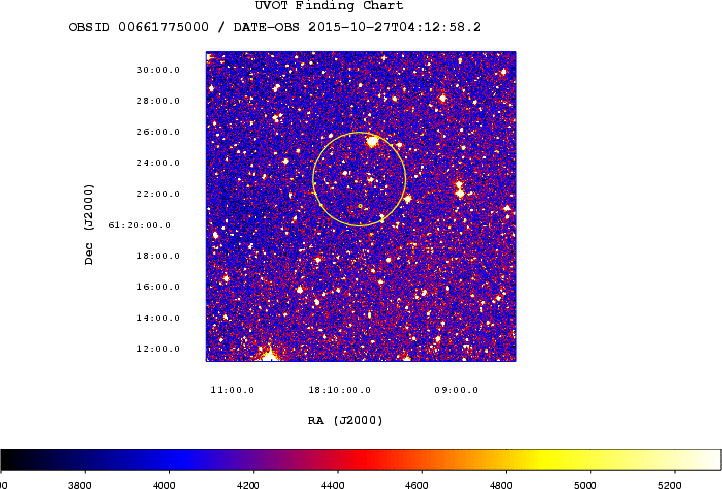
TITLE: GCN/SWIFT NOTICE
NOTICE_DATE: Tue 27 Oct 15 04:17:00 UT
NOTICE_TYPE: Swift-UVOT Image
TRIGGER_NUM: 661775, Seg_Num: 0
POINT_RA: 272.445d {+18h 09m 47s} (J2000)
POINT_DEC: +61.372d {+61d 22' 19"} (J2000)
ROLL: 238.910d
IMG_START_DATE: 17322 TJD; 300 DOY; 15/10/27
IMG_START_TIME: 15162.83 SOD {04:12:42.83} UT, 858.7 [sec] since BAT Trigger Time
FILTER: 10, White
EXPOSURE_ID: 467611978
X_OFFSET: 648 [pixels]
Y_OFFSET: 720 [pixels]
WIDTH: 160 [pixels]
HEIGHT: 160 [pixels]
X_GRB_POS: 808
Y_GRB_POS: 880
BINNING_INDEX: 1
IM_URL: sw00661775000msuni0874.fits
SUN_POSTN: 211.20d {+14h 04m 47s} -12.66d {-12d 39' 19"}
SUN_DIST: 88.15 [deg] Sun_angle= -4.1 [hr] (East of Sun)
MOON_POSTN: 27.63d {+01h 50m 31s} +8.72d {+08d 43' 08"}
MOON_DIST: 93.91 [deg]
MOON_ILLUM: 100 [%]
GAL_COORDS: 90.50, 28.51 [deg] galactic lon,lat of the pointing direction
ECL_COORDS: 282.79, 84.70 [deg] ecliptic lon,lat of the pointing direction
COMMENTS: SWIFT-UVOT Image.
COMMENTS: The GRB Position came from the Window Position in the Mode Command.
COMMENTS: The image has 2x2 binning (compression).
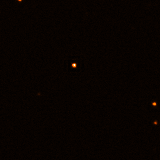
TITLE: GCN/SWIFT NOTICE
NOTICE_DATE: Tue 27 Oct 15 04:17:11 UT
NOTICE_TYPE: Swift-UVOT Processed Image
TRIGGER_NUM: 661775, Seg_Num: 0
POINT_RA: 272.445d {+18h 09m 47s} (J2000)
POINT_DEC: +61.372d {+61d 22' 19"} (J2000)
ROLL: 238.910d
IMG_START_DATE: 17322 TJD; 300 DOY; 15/10/27
IMG_START_TIME: 15162.83 SOD {04:12:42.83} UT, 858.7 [sec] since BAT Trigger Time
FILTER: 10, White
EXPOSURE_ID: 467611978
X_OFFSET: 648 [pixels]
Y_OFFSET: 720 [pixels]
WIDTH: 160 [pixels]
HEIGHT: 160 [pixels]
X_GRB_POS: 808
Y_GRB_POS: 880
BINNING_INDEX: 1
IM_URL: sw00661775000msuni0874.fits
SUN_POSTN: 211.20d {+14h 04m 47s} -12.66d {-12d 39' 19"}
SUN_DIST: 88.15 [deg] Sun_angle= -4.1 [hr] (East of Sun)
MOON_POSTN: 27.63d {+01h 50m 31s} +8.72d {+08d 43' 10"}
MOON_DIST: 93.91 [deg]
MOON_ILLUM: 100 [%]
GAL_COORDS: 90.50, 28.51 [deg] galactic lon,lat of the pointing direction
ECL_COORDS: 282.79, 84.70 [deg] ecliptic lon,lat of the pointing direction
COMMENTS: SWIFT-UVOT Processed Image.
COMMENTS: The GRB Position came from the Window Position in the Mode Command.
COMMENTS: The image has 2x2 binning (compression).
COMMENTS: All 4 attachments are included.
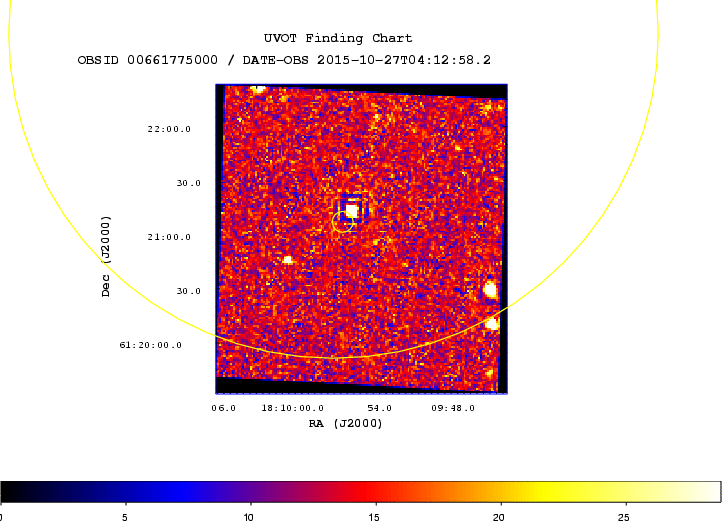
RA(J2000) = 18h 09m 58s Dec(J2000) = +61d 22' 51"with an uncertainty of 3 arcmin (radius, 90% containment, including systematic uncertainty). The BAT light curve showed a complex peaked structure lasting at least 150 seconds. The peak count rate was ~6000 counts/sec (15-350 keV), at ~110 sec after the trigger.
RA(J2000) = +18h 09m 57.26s Dec(J2000) = +61d 21' 05.4"with an uncertainty of 4.8 arcseconds (radius, 90% containment). This location is 106 arcseconds from the BAT onboard position, within the BAT error circle. No event data are yet available to determine the column density using X-ray spectroscopy.
RA(J2000) = 18:09:56.68 = 272.48615 DEC(J2000) = +61:21:13.4 = 61.35373with a 90%-confidence error radius of about 0.61 arc sec. This position is 9.06 arc sec. from the center of the XRT error circle. The estimated magnitude is 14.46 with a 1-sigma error of about 0.14. No correction has been made for the expected extinction corresponding to E(B-V) of 0.05.
RA = 18:09:56.70 (J2000) DEC= +61:21:13.01 (J2000)The object location is consistent with the position reported from UVOT (Maselli et al., GCN 18478). The object has clear band mag of ~13.0 at the moment.
RA (J2000): 18h 09m 56.87s Dec (J2000): +61d 21' 12.4"with an uncertainty of 1.7 arcsec (radius, 90% confidence).
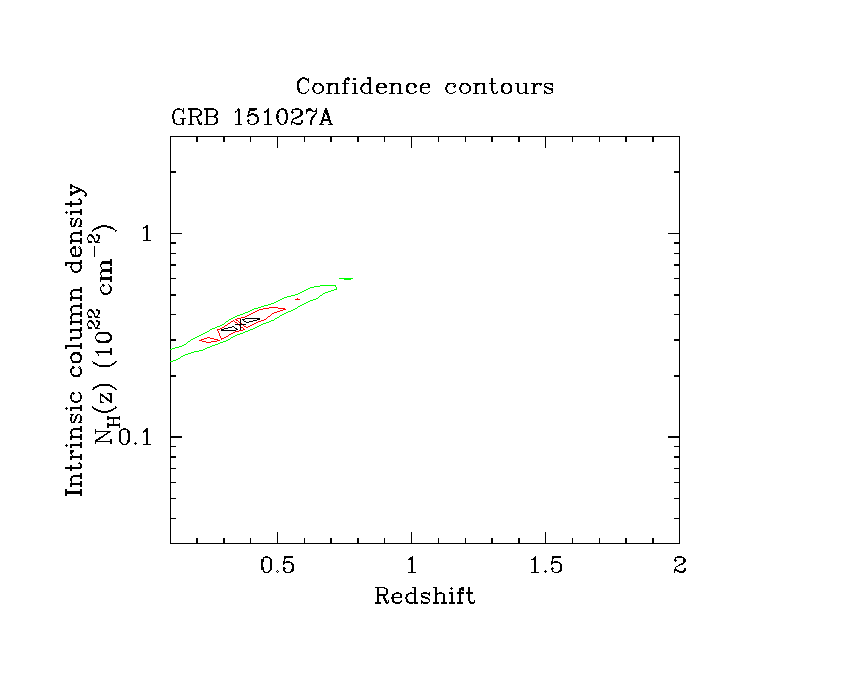
Galactic foreground: 3.8 x 10^20 cm^-2 Intrinsic column: 3.3 (+/-0.6) x 10^21 cm^-2 at z=0.81 Photon index: 1.99 (+/-0.08)If the light curve continues to decay with a power-law decay index of 2.01, the count rate at T+24 hours will be 0.035 count s^-1, corresponding to an observed (unabsorbed) 0.3-10 keV flux of 1.3 x 10^-12 (1.7 x 10^-12) erg cm^-2 s^-1.
T0+[sec] MID-UT T-EXP[sec] g' Rc Ic ------------------------------------------------------------------------------------------------------------------ 18928 09:34:24 2220 16.72+/-0.06 15.62+/-0.05 16.00+/-0.04 ------------------------------------------------------------------------------------------------------------------ T0+ : Elapsed time after the burst T-EXP: Total Exposure timeWe used GSC2.3 catalog for flux calibration.
RA(J2000) = 18h 09m 59.6s Dec(J2000) = +61d 21' 39.6"with an uncertainty of 1.1 arcmin, (radius, sys+stat, 90% containment). The partial coding was 18%.
RA(J2000) = +18h 09m 57.26s Dec(J2000) = +61d 21' 05.4"The light curve shows complex behavior, with marginal evidence of brightening after the initial finding chart, then fading with a decay slope of 0.6-0.8 over the first orbit. The second orbit magnitudes are consistent with no fading from those measured at the end of the first orbit while the third orbit shows significant fading.
Filter T_start(s) T_stop(s) Exp(s) Mag white (fc) 95 245 147 14.52+-0.02 white 589 609 19 14.44+-0.04 white 762 782 19 14.71+-0.04 white 858 1008 147 14.81+-0.02 white 1161 1354 38 15.07+-0.04 white 1510 1529 19 15.23+-0.04 white 6449 6649 197 15.28+-0.01 white 23966 24662 677 17.14+-0.01 v 639 1579 116 15.12+-0.04 b 564 1505 97 15.37+-0.03 u 308 1479 323 14.00+-0.03 w1 688 1455 77 14.71+-0.05 m2 663 1598 88 14.98+-0.06 w2 615 1555 116 15.12+-0.05The magnitudes in the table are not corrected for the Galactic extinction due to the reddening of E(B-V) = 0.05 in the direction of the burst (Schlegel et al. 1998).
Tmid(h)+T0 Filter Exp. time Mag Mag. Err. 13.393 R 4x300s 17.06 0.12 13.747 V 4x300s 17.56 0.25 14.103 R 4x300s 17.06 0.09 14.457 V 4x300s 17.49 0.10
RA = 18:09:56.691 +/- 0.001 Dec = 61:21:13.03 +/- 0.02consistent with the enhanced Swift/XRT position (Goad et al.; GCN 18482) and the optical position (Maselli et al.; GCN 18478, Zheng et al.; GCN 18479, Hentunen et al.; GCN 18503). Follow-up observations are planned. We thank the VLA staff for rapidly scheduling these observations."
Mid Time Exposure Filter Magnitude (days) (s) ------------------------------------------------------- 0.90 5x120 R 16.87 +- 0.04 0.91 6x120 I 17.26 +- 0.05 -------------------------------------------------------Calibration is done against nearby USNOB-1 star RA(J2000)=18:09:53.742, DEC(J2000)=+61:20:57.27, assuming R2=17.21 mag and I=17.17 mag. We note the presence of another USNOB-1 object at RA(J2000)=18:09:56.489, DEC(J2000)=+61:21:10.64, lying at 3.1 arcsec from the GRB afterglow.
============================== Date Time(UT) filter mag merr 2015-10-27 11:21:59 R 16.2 0.1 2015-10-28 11:04:00 R 18.7 0.1 ==============================Calibrated by the USNO B1.0 R2 mag
Filter t-t0 (hr) Mag +- Merr ----------------------------------------- B 17.94 21.4 +- 0.2 R 18.17 20.6 +- 0.1 I 18.28 19.2 +- 0.1 J 16.92 18.2 +- 0.1 H 17.38 18.3 +- 0.1 K 17.60 17.2 +- 0.2The optical filters are calibrated to USNO-B1 and the NIR filters to 2MASS, where a single star that appeared in both catalogs was used for the zeropoint calculation. These magnitudes are not corrected for foreground extinction.
# T_mid-T0,h exp,s R_mag 1 36.612 6 x 300 18.7 +/- 0.1 2 37.717 3 x 300 18.9 +/- 0.1The photometry is based on nearby USNO-B1 stars proposed by A. Pozanenko (IKI RAS). The observations were provided with the help of the SAO RAS staff: V. Komarov, O. Spiridonova and R. Uklein.
t_mid time since burst (d) Magnitude 2015-10-29T02:14:14 1.93 19.63 +/- 0.04 2015-10-30T02:02:28 2.92 20.48 +/- 0.08This implies a relatively steep power-law decay index of ~ 1.9 at these times.
GRB Countpart: 18h 09m 56.71s +61d 21m 12.78s Reference One: 18h 10m 05.68s +61d 23m 14.97s Reference Two: 18h 09m 51.53s +61d 22m 48.87s Julian Date Date Ref. C Ref. K Var. V C-K Differential Mid Exposure yyyy-mm-dd.ddddd Raw Mag. Raw Mag. Raw Mag. Differ. Mag. -------------- ---------------- --------- --------- --------- --------- ------------ 2457322.689715 2015 10 27.18972 -2.937 -3.111 -1.085 0.174 15.051 2457322.692866 2015 10 27.19287 -2.433 -2.622 -1.355 0.190 14.278 2457322.700101 2015 10 27.20010 -2.732 -2.925 -1.433 0.192 14.499 2457322.703174 2015 10 27.20317 -2.921 -3.112 -1.605 0.191 14.516 2457322.724392 2015 10 27.22439 -2.909 -3.088 -1.391 0.180 14.718 2457322.758285 2015 10 27.25829 -2.949 -3.142 -1.151 0.193 14.998 2457322.786495 2015 10 27.28649 -2.906 -3.085 -0.916 0.180 15.189 2457322.801286 2015 10 27.30129 -2.901 -3.108 -0.722 0.207 15.379 2457322.814370 2015 10 27.31437 -2.879 -3.079 -0.406 0.201 15.673
Filter t-t0 (hr) Mag +- Merr ----------------------------------------- B 17.94 18.2 +- 0.1 R 18.17 17.9 +- 0.1 I 18.28 17.4 +- 0.1 J 16.92 16.4 +- 0.1 H 17.38 15.5 +- 0.1 K 17.60 15.1 +- 0.1The optical filters are calibrated to USNO-B1 and the NIR filters to 2MASS, where a single star that appears in both catalogs was used for the zeropoint calculation. These magnitudes are not corrected for foreground extinction.
Date UT start t-T0 Filter Exp. OT Err
(mid, days) (s)
2015-10-28 21:23:11 1.7431 R 25*120 19.56 0.12
The photometry is based on nearby USNO-B1.0 stars
USNO-B.1_id R2 1513-0237223 16.66 1513-0237170 15.58 1513-0237251 16.81 1513-0237270 16.78
Date UT start t-T0 Filter Exp. OT Err.
(mid, days) (s)
2015-10-29 13:18:41 2.4082 R 55*60 19.84 0.05
2015-10-30 12:11:18 3.3736 R 78*60 20.32 0.06
2015-10-31 12:47:18 4.3958 R 41*120 21.25 0.07
2015-11-01 12:28:18 5.3694 R 19*120 21.50 0.12
The photometry is based on nearby USNO-B1.0 stars
USNO-B.1_id R2 1513-0237223 16.66 1513-0237170 15.58 1513-0237251 16.81 1513-0237270 16.78Late time photometry could be influenced by the nearby USNO-B1.0 source.
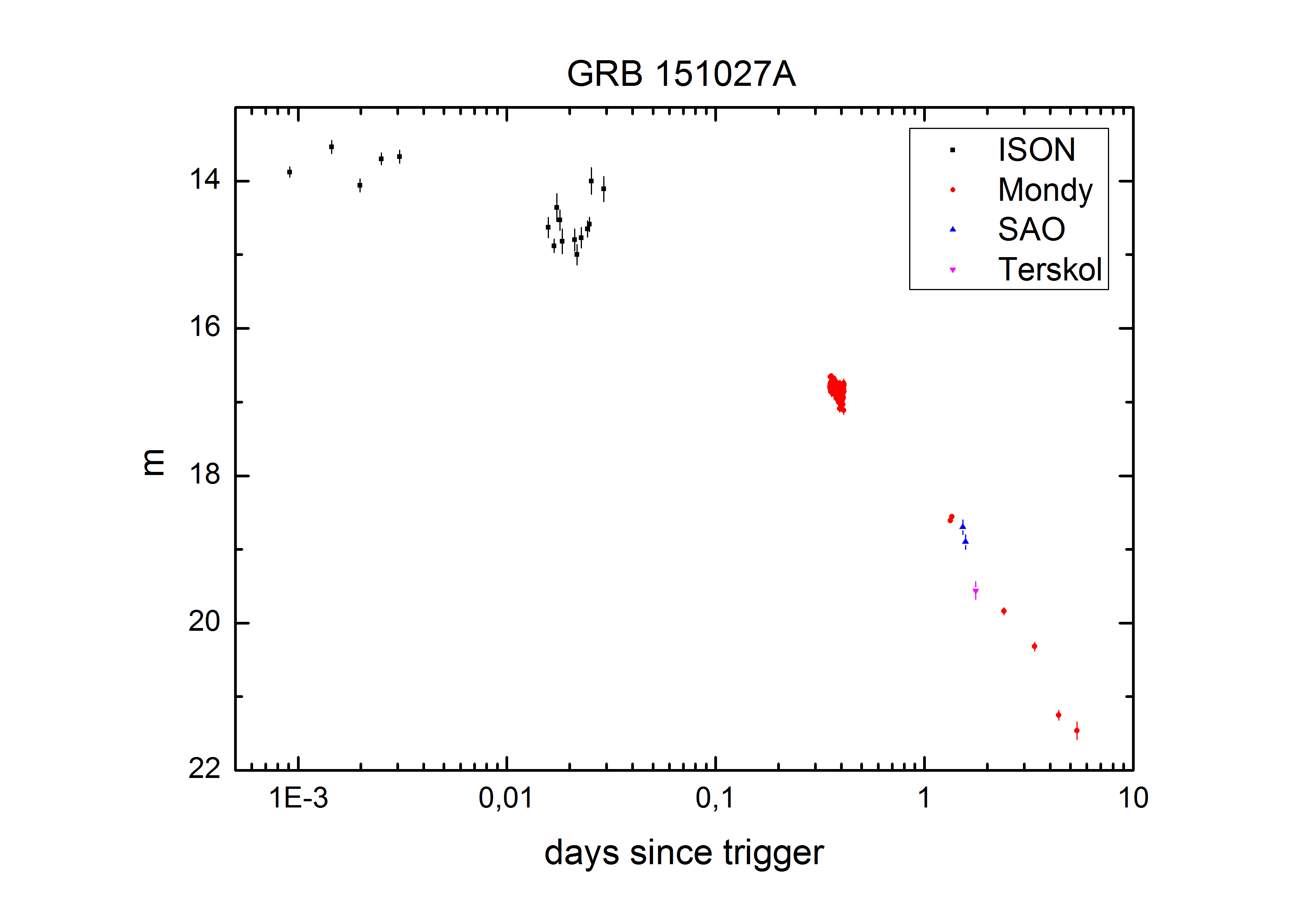
t-t0(d) m(CR) err(CR) 0.5235 16.872 0.030 0.5334 16.816 0.030 0.6531 17.160 0.044 0.6644 17.322 0.047 0.7468 17.575 0.065Rc filter:
t-t0(d) m(R) err(R) 0.6365 17.257 0.058 0.6848 17.544 0.074 0.7353 17.580 0.118These magnitudes of GRB 151027A are consistent with other magnitudes obtained at similar epochs of this burst (e.g. Hentunen et al. GCN Circular #18503; Sonbas et al. #18518).
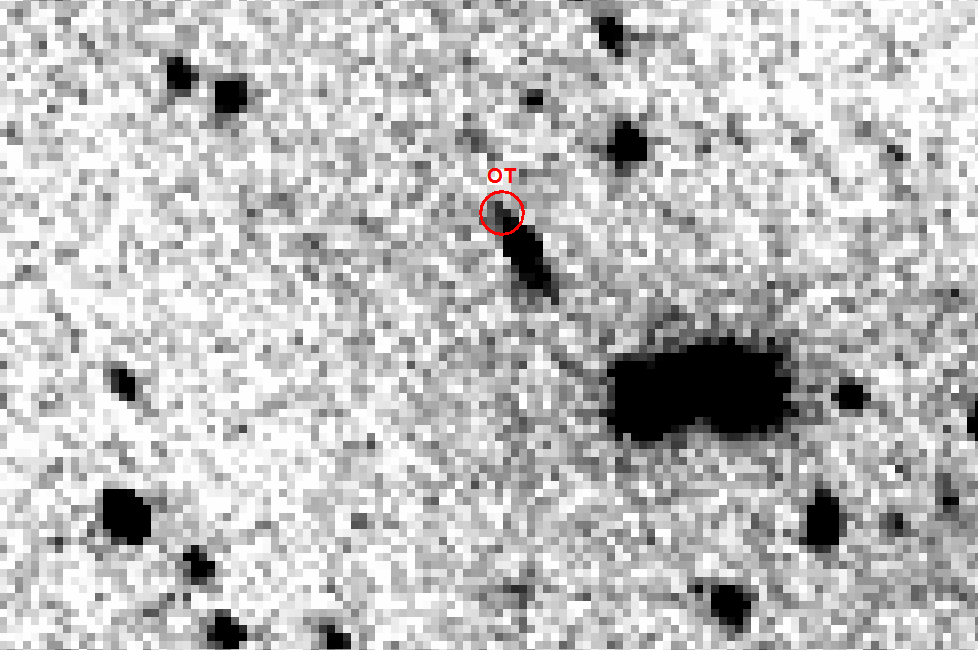
--------------------------------------------------------------------- Time (UT start) Filter Mag error 14:56 R 16.60 0.06 15:36 R 16.67 0.07 16:20 R 16.86 0.08 -----------------------------------------------------------------------This message may be cited.
Date UT start t-T0 Filter Exp. OT Err.
(mid, days) (s)
2015-11-06 15:04:07 10.474 R 10*300 23.30 0.24
2015-11-09 14:06:04 13.443 R 10*300 23.33 0.20
The photometry is based on nearby USNO-B1.0 stars
USNO-B.1_id R2 1513-0237223 16.66 1513-0237251 16.81 1513-0237270 16.78A preliminary light curve of the afterglow can be found in http://grb.rssi.ru/GRB151027A/GRB151027A_lc.png
